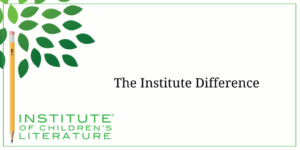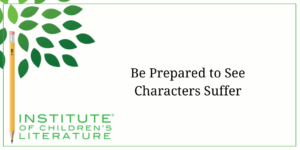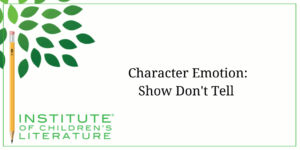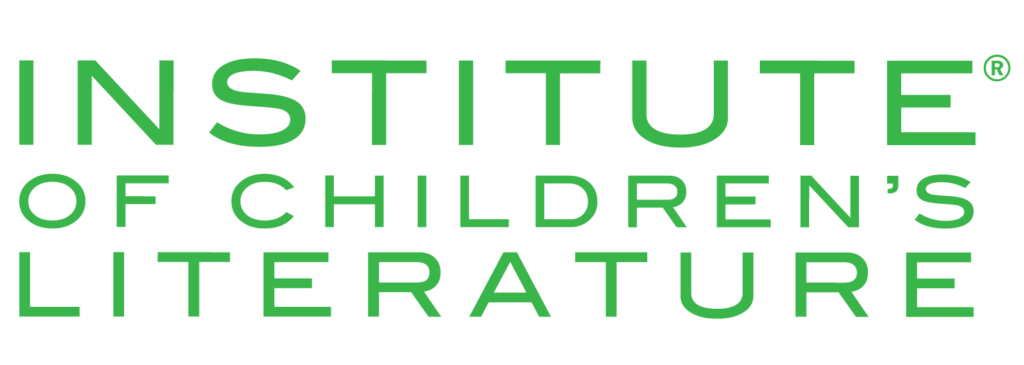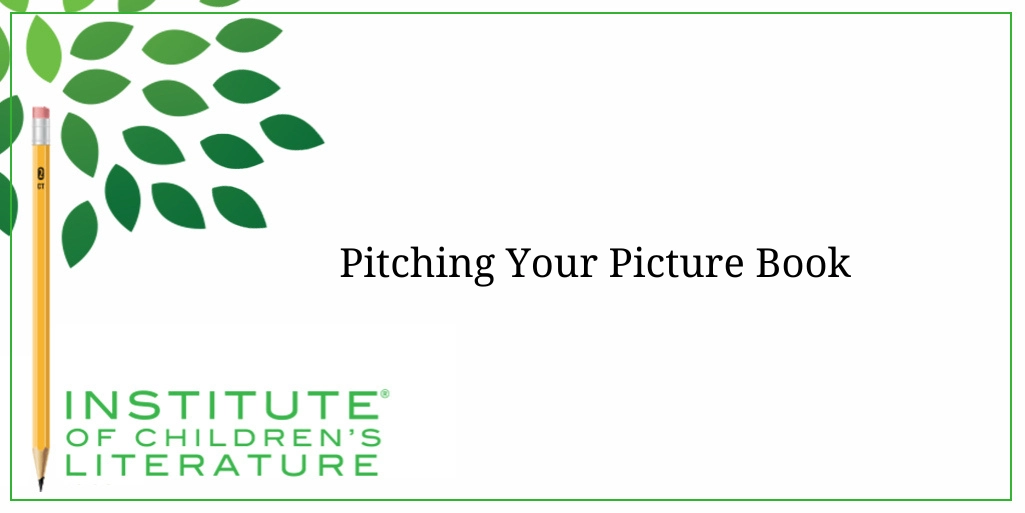
- Date: October 3, 2024
- Author: Jan Fields
- Category: Writing for Children Blog
- Market Guides, Picture Book, Picture Books, Submissions
We teach our students how to write and get published!
View our Course Catalog >
Pitching Your Picture Book
In the publishing world, pitching used to mean trying to talk an agent or editor into taking on your picture book, sight unseen. When pitching your picture book there were elevator pitches, which were short bursts of descriptions about your project that could be shared at conferences when you have an editor or agent trapped in an elevator or beside you at the breakfast buffet.
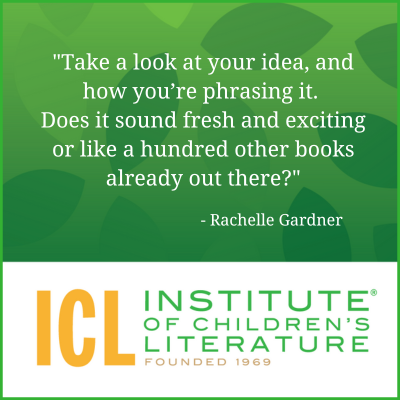 Now, submitting picture books often involves an element of pitching in ways it never has before. Be sure you have the latest copy of the Book and Magazine Market Guides for Children’s Writers, so you know exactly what publishers want. Now, let’s look at what’s current in today’s submissions.
Now, submitting picture books often involves an element of pitching in ways it never has before. Be sure you have the latest copy of the Book and Magazine Market Guides for Children’s Writers, so you know exactly what publishers want. Now, let’s look at what’s current in today’s submissions.
Full Manuscripts
Most publishers who accept picture book submissions from writers at all will accept full manuscripts. It’s rare to find one that requires a pitch without a manuscript. It’s not rare to find publishers who won’t let you pitch at all. A great many publishers have gone the “agents only” route. That’s been done to cut down on inappropriate submissions, especially in these days of tiny staff numbers at virtually all the publishers.
And speaking of inappropriate submissions, the rise of AI hasn’t helped things much. A great many agents and editors have begun getting submissions that were written by AI. This flood of unpublishable manuscripts (because AI cannot write a competitive book, period) has forced more publishers and agents to close to submissions. So, if you know anyone who has been considering having AI write their book. Advise them not to. Professionals can spot AI written material in seconds, and it only makes it harder for publishers and agents to find time to search for good books among their submissions.
As I said, most publishers who take submissions of picture books at all will take the full manuscript. And most will accept submissions via email. It’s rare to find a publisher, like Eerdmans Books for Young Readers, which demands postal submissions only. When they do, it’s because they want to see works by new writers but are limiting the means of submission to keep the number of submissions lower.
The Letter
Along with any submission, you’re going to have a letter. Some publishers call it a cover letter. Some call it a query letter. Some call it a pitch letter. I even found one that called it a concept note. Whatever you call it, it’s a letter designed to introduce the agent or editor quickly to the book you’re offering before they read the manuscript (or sometimes after they read the manuscript. I’ve known editors who read the letter after reading an interesting manuscript to find out more about the writer and their experience.)
 The letter used to be taken up with only a few things. A quick one or two-sentence summation of what the picture book is about. The letter would also tell why you think this publisher is a good match for your book. Finally, you’d tell a bit about yourself. That was it. That was all that was asked for. And occasionally, it still is. Bala Kids, for example, still simply asks for “a cover letter that includes a short author biography, book summary, and the complete manuscript.”
The letter used to be taken up with only a few things. A quick one or two-sentence summation of what the picture book is about. The letter would also tell why you think this publisher is a good match for your book. Finally, you’d tell a bit about yourself. That was it. That was all that was asked for. And occasionally, it still is. Bala Kids, for example, still simply asks for “a cover letter that includes a short author biography, book summary, and the complete manuscript.”
As another example, Cherry Lake Publishing asks for submissions via email and says, “The body of your email should be your cover letter and include: your full name, your postal address, any previous publishing experience, word count, and a brief summary of your manuscript (please do not send cover letters as an additional attachment).” That kind of content request used to be fairly standard. It’s not exactly rare today. Chronicle Books, Child’s Play, Charlesbridge, Creston, and Blue Dot Kids Press, for example, all asked for similar things.
Today, some publishers want more.
More than Pitching Your Picture Book
Let’s look at publishers asking for extra things related to the bio. You’ll notice quickly that marketing now plays a part in the submission process. In the past, the publisher didn’t ask for or want much of the writer’s help with planning the marketing of the book. There are publishers interested in the writer’s views on the market and what the writer might do to help with promotion. Let’s take a peek at submission guidelines to see what is specifically asked for by these book publishers.
Andrews McMeel Kids: “Please include information on all social media platforms, such as account names, number of followers, etc.”
Arbordale: “Tell us what other works, if any, you have published. Let us know about any applicable awards you have won.”
 Beyond Words asks for credentials, social media numbers, marketing platform and plans, previous relevant work, comps, and details on any upcoming speaking engagements or public appearances. But that’s not all. Their submission guidelines also include a request for ” a 1–2-minute video introducing yourself and giving a brief summary of your submission (can be recorded on a smartphone).” That’s a new one, for sure.
Beyond Words asks for credentials, social media numbers, marketing platform and plans, previous relevant work, comps, and details on any upcoming speaking engagements or public appearances. But that’s not all. Their submission guidelines also include a request for ” a 1–2-minute video introducing yourself and giving a brief summary of your submission (can be recorded on a smartphone).” That’s a new one, for sure.
Familius: “Include a biography (with publishing credits and relevant credentials) for the author, illustrator, and photographer as applicable. Please also tell us about markets you’ve worked with in the past, including radio stations, newspapers, magazines, organizations/corporations, speaking engagements, and your own social media reach.”
These are not the only publishers asking for information about social media. Even so, don’t take the additional requests for information about your own social media use or past awards to mean that publishers no longer market. That’s a myth that is tenacious and widespread.
Publishers do market. But they’ve come to understand that writers can help. And, in fact, some writers are really good at spreading the word about their books. They want to know if you’re one of those authors.
Is that bad news or good? It depends. In a situation where a publisher receives two equally good books when they only have list space to publish one, the person who comes with a social media reach is likely to win that space. But that’s a long way from “publishers don’t market.” But, if you have a social media reach, that’s a definite bonus.
About the Book
The bio isn’t the only thing that has beefed up. Now publishers often want a bit more about the book, especially about how it relates to all the other similar books in the market. Again, let’s look at things specifically asked for by the publishers:
 Albert Whitman: “Please provide titles for up to three comparative books published in the past five years. These should be books that have a similar audience to your book and that you feel will compare with your book in the marketplace. Explain how your book is different from these books.”
Albert Whitman: “Please provide titles for up to three comparative books published in the past five years. These should be books that have a similar audience to your book and that you feel will compare with your book in the marketplace. Explain how your book is different from these books.”
Andrews McMeel Kids: “Please upload a document that addresses the following: the work’s targeted audience, the work’s relevance, rationale for why we are the best publisher for your work, and all other pertinent information that will help us thoroughly understand your proposal and be able to make a publishing decision. Please also include: comparative titles (already published or soon-to-be published titles that are similar or comparable to your proposal) and key selling points (i.e. how will your book stand apart from other titles, why we should publish your title, etc.)”
Arbordale: “Include a paragraph explaining why you wrote the manuscript; tell us about any competition (author/illustrator, publisher, year published, sales data if available, etc.). If there are competitive books, please explain why your book is different and why you believe it should sell better. How do you envision the marketing of the book?
“You must include a bibliography to indicate research on the underlying science concept, regardless of whether the story is fiction or non-fiction. All accepted manuscripts will be vetted for accuracy by experts in the field. The underlying scientific facts must be accurate.”
Familius: “Include a market analysis of the book’s potential audience. Who is the target reader? Are there similar titles? Be sure to include a list of those titles, their publishers and publication dates, and how your book is different.”
One thing to say about showing how your book is different: that doesn’t mean “how your book is better.” They aren’t asking you to critique other books. You don’t say, “My picture book takes Ruth on a trip to the Island of the Ruffians, much like WHERE THE WILD THINGS ARE only better.” Don’t talk poorly about other books and other writers.
 Instead, talk about how yours is different, such as “RUNAWAY RUTH is a homage to WHERE THE WILD THINGS ARE as Ruth uses her imagination to slip out of time and run straight into adventure. RUNAWAY RUTH brings a modern flavor to the tale of home and love.”
Instead, talk about how yours is different, such as “RUNAWAY RUTH is a homage to WHERE THE WILD THINGS ARE as Ruth uses her imagination to slip out of time and run straight into adventure. RUNAWAY RUTH brings a modern flavor to the tale of home and love.”
Now, you’d be better served to use recent comp titles instead of calling up a classic (and some guidelines specifically mention wanting recent comp titles). Still, the approach is the same: show how you’re different. How your book makes a place for itself alongside other books in the field—not how yours would dominate and replace other books in the field.
Don’t Fear the Differences
Overall, the additions to submission guidelines and pitching picture books are about how well you’ve considered the market, what you see about this book you’re trying to sell, and what you bring to the table personally in terms of making connections to readers. That doesn’t mean the publisher is going to put all their hopes on your ability to know what is out in the market and how your book will compete. It doesn’t mean the publisher is hoping you’re going to talk every reader into buying. Instead, these additions help them know how well you know your own book and what you personally bring to the marketing plan.
These additions aren’t really a test though. If the titles you choose and what you say about them aren’t a great reflection of your knowledge of publishing, that won’t make a publisher turn down a great book. But as with the biography additions, when a publisher is looking at two great books and they only have room to take one, a market-savvy writer may edge out the competition.
The bottom line is that the publisher wants to sell books, and anything you can do to help makes the book that much more tempting. The additions to submissions should be adding tasty extras to an amazing manuscript offering. The bottom line is that they aren’t going to pick a weak book based on how good the author is with social media or whether that author can describe the market perfectly. They’re going to go with the strong book because ultimately that is going to have staying power in the market.
So, write the best book you can. Always. But along the way, don’t hesitate to look into these value-added skills when it comes to pitching picture books. They definitely can’t hurt.
Related Articles
With over 100 books in publication, Jan Fields writes both chapter books for children and mystery novels for adults. She’s also known for a variety of experiences teaching writing, from one session SCBWI events to lengthier Highlights Foundation workshops to these blog posts for the Institute of Children’s Literature. As a former ICL instructor, Jan enjoys equipping writers for success in whatever way she can.

